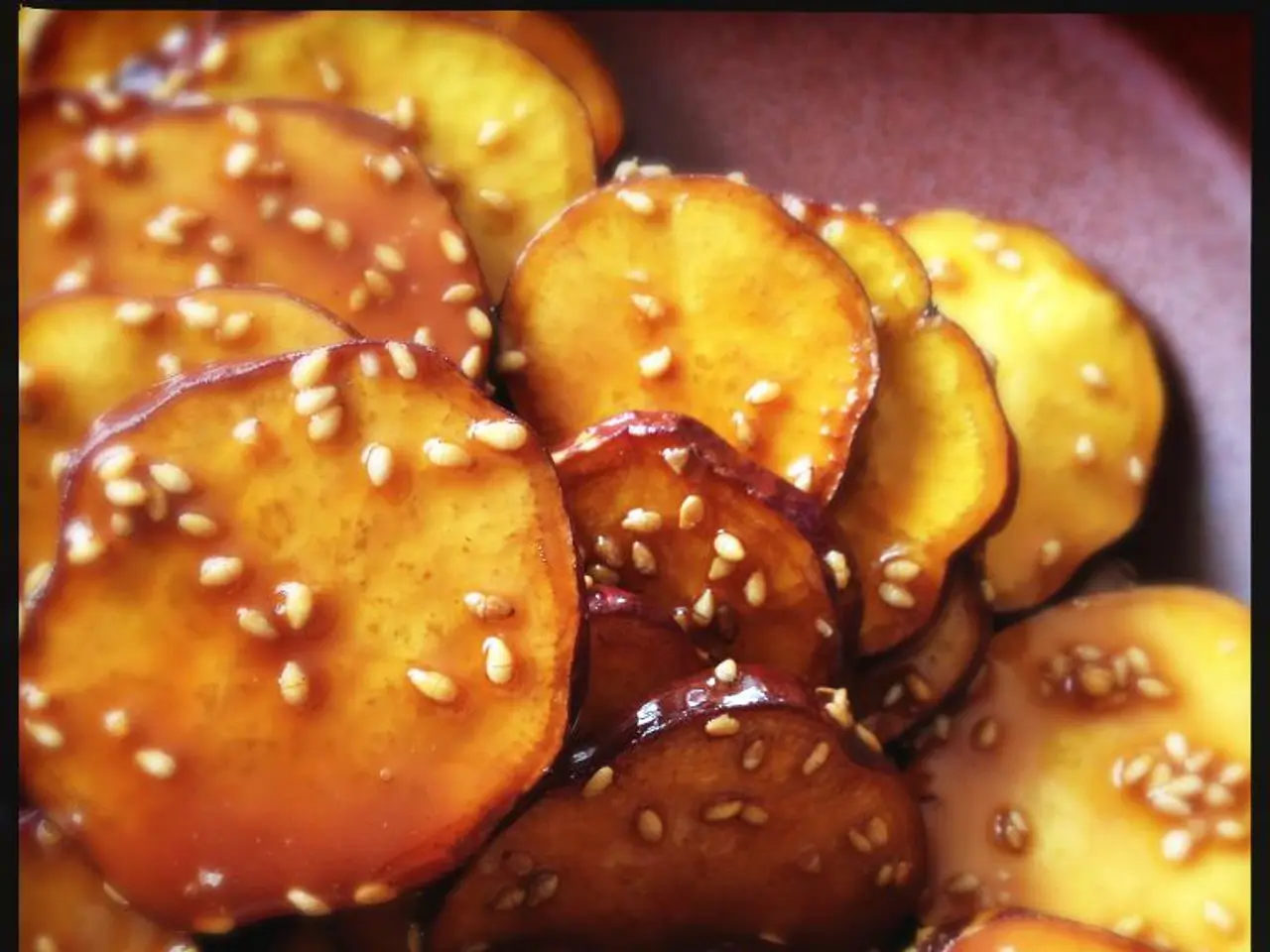Time-Worn Culinary Delights: Where Tradition Infuses Every Bite
In the era of globalization and technological advancement, family traditions risk becoming lost in a sea of homogenized tastes. However, one powerful means of preserving these unique cultural threads is through the humble family recipe.
Recipes can be more than just instructions for food preparation; they can serve as "edible time capsules," preserving the "DNA" of cultural traditions and family history. By recreating ancestral dishes, individuals can engage in rituals that evoke the kitchens, stories, and lives of forebears, bridging generations and continents.
These recipes also function as a form of oral history, especially in cultures lacking extensive written records. Elders transmit knowledge through the act of cooking, passing down ingredient choices, techniques, and timing by demonstration and storytelling. This culinary transmission anchors families in their unique histories and identities.
Family meals and recipes also preserve regional and ethnic identities by maintaining niche traditional dishes specific to a family’s origin. For example, Italian genealogy can be traced through regional recipes that point to a particular background and its migratory story. Shared meals become venues for storytelling and cultural rituals, further reinforcing heritage.
However, these recipes are not static. They adapt over generations due to migration, cultural exchange, and changing social contexts. This adaptability itself tells the story of a family’s journey through time and place, reflecting how cultural heritage evolves while maintaining its core essence.
Cooking and family recipes connect individuals to their ancestors and cultural roots through sensory and ritual experiences. They preserve oral histories, values, and cultural knowledge beyond written records. They maintain and express regional or ethnic identity and genealogy through specific dishes and culinary customs. They serve as living documents that evolve with migration and social change, providing a personal lens on cultural continuity and transformation.
Exploring cultural heritage and genealogy through family recipes is a multisensory journey that gives tangible expression to identity, history, and familial bonds. It involves jotting down family recipes, asking elders the stories behind each dish, and delving into family history. There is a growing appreciation for this approach, with events like cooking classes focused on indigenous foods, international food festivals, and organizations dedicated to culinary history.
By incorporating ancient ingredients into modern recipes, we can bridge the past and present, reviving flavors that tell ancient stories. For instance, the marriage of Greek feta cheese with Mexican avocados in a fresh salad is an example of how food can be a melting pot of cultural elements.
As families migrate, ingredients are replaced or adjusted based on availability in new lands, leading to the creation of hybrid cuisines. Sushi, as it became popular internationally, introduced people to Japanese culinary art and contributed to an increased interest in Japanese culture. Ancient grains like einkorn and farro have seen a resurgence in kitchens around the world, providing nutritional benefits and connecting us to the dietary practices of early civilizations.
Food tells its own family stories, and many genealogists have discovered fascinating connections between their family tree and their culinary practices. Genealogy research can reveal pivotal details about one’s ancestry, including where they lived and the foods they likely enjoyed.
In conclusion, cooking and family recipes serve as powerful means to explore cultural heritage and genealogy. They are living connections to ancestors, cultural identity, and historical experience. By preserving and sharing these recipes, we not only treasure our past but also enrich our present and future.
- Preserving cultural traditions and family history can be achieved through the recreation of ancestral recipes, functioning as "edible time capsules" that carry the "DNA" of heritage.
- Cultural oral histories can be upheld through cooking and family recipes, especially in regions with limited written records, as elders pass down knowledge through demonstration and storytelling.
- Family meals and recipes not only maintain regional and ethnic identities by preserving traditional dishes but also provide venues for storytelling and cultural rituals that reinforce heritage.
- The adaptability of recipes due to migration, cultural exchange, and changing social contexts tells a story of a family’s journey, reflecting how cultural heritage evolves while maintaining its core essence.
- Exploring cultural heritage and genealogy through family recipes offers a multisensory experience, bridging the gap between past and present, and connecting individuals to their ancestors, cultural roots, and identity.




